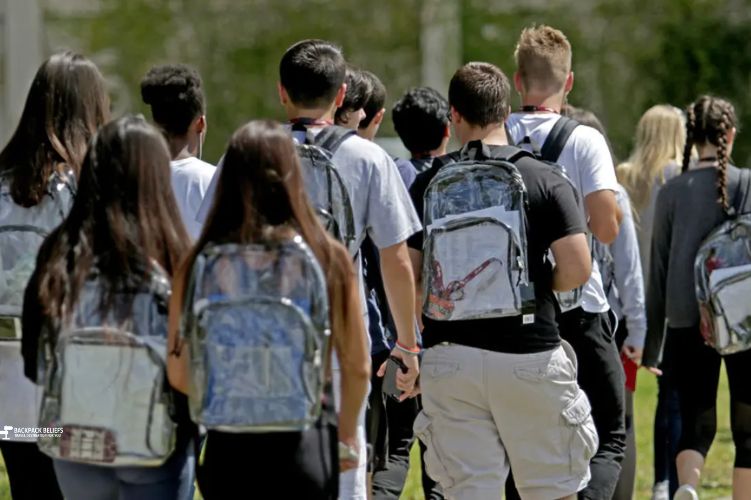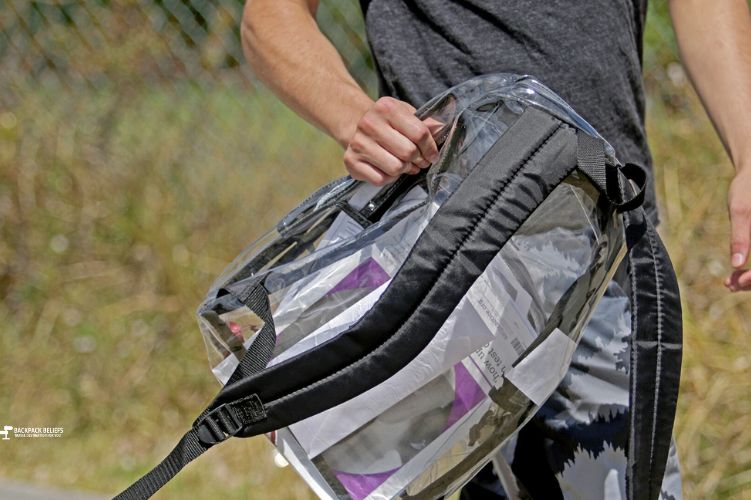As a parent of three school-aged children and an education writer with over 7 years of experience reporting on school policies, student safety is an issue near and dear to my heart. I was troubled to learn that Gwinnett County Public Schools is considering enforcing clear backpacks for students in light of recent safety concerns. While measures must be taken to protect students, I worry that clear backpacks could violate privacy while doing little to address underlying issues. Read below about “Gwinnett Schools May Enforce Clear Backpack Policy for Student Safety”.
In my career I’ve written extensively about school safety procedures and their implications on student wellbeing. I’ve interviewed administrators, teachers, security experts, and students themselves to provide balanced coverage on complex debates around effective safety strategies. Through these discussions, I’ve learned that overly invasive policies often fail to make meaningful impact while breeding resentment and distrust in the student population.
Table of Contents
Gwinnett Schools May Enforce Clear Backpack Policy for Student Safety
As both a parent and reporter, I believe we need to have thoughtful dialogue around both the pros and cons of proposed safety policies. In this article I will draw on my years of expertise to break down the clear backpack initiative – exploring evidence around its effectiveness, privacy implications, and potential impacts on school climate. My goal is to further constructive conversation so we can find solutions that make students feel safer while respecting their rights.
The Rise of Clear Backpacks in Schools
Clear backpacks have gained traction in schools across America over the past decade. The rationale is simple – if school staff can easily see into students’ bags, they can spot any dangerous or illegal items being brought onto campus.
The trend took off after the tragic mass shooting at Marjory Stoneman Douglas High School in Parkland, Florida in 2018. In response to the attack, the district approved a sweeping new safety protocol that included mandatory clear backpacks for all students. High schools in cities like Los Angeles, Chicago, and New York also put clear bag rules into effect around the same time.
School boards have accelerated clear backpack policies even further in the wake of more recent shootings. Districts in Michigan, Virginia, Wisconsin, and other states have enforced transparent bags just this year alone.
School leaders are acting with the best of intentions – they desperately want to prevent violence and keep kids safe. However, research and first-hand accounts raise questions around whether clear backpacks actually achieve these goals. Additionally, many students feel these policies encroach on reasonable privacy boundaries while promoting an atmosphere of mistrust.
Do Clear Backpacks Improve School Safety?
On the surface, being able to easily view contents of a backpack seems like an effective safety strategy. However, studies on the deterrent effects of strict security measures do not show unambiguous results.
According to a study published in Criminology & Public Policy, schools with intense surveillance systems including clear bags did not report fewer incidents of violence or victimization. In fact, some research suggests that authoritarian policies actually [contribute to disorder] by breeding resentment and distrust of authority among the student population.
Clear bag proponents argue that even if the policies don’t deter attacks, they allow faster response times by making weapons easier to spot. However, skeptics point out that anyone planning an attack would simply not use a clear backpack in the first place.
As an education reporter, I’ve spoken with school risk management experts who explain that visibly invasive measures often force those with bad intentions to find more covert avenues – making it harder for admin to track risks. Clear bags might create an illusion of safety while failing to address the root causes that lead a person to violently act out.
Student Privacy Concerns
Most teens are highly sensitive about privacy, especially given the hyper-connected landscape they’ve grown up in. Across my reporting, students have shared intense frustration over clear bag policies infringing on their reasonable desire for personal space.
17-year-old high school senior Lisa Chen explained: “I carry around very personal things I don’t want teachers or other kids seeing, especially as a girl. Tampons, notes from friends, that kind of thing. The clear backpack policy makes me stressed that people will judge me or spread rumors over something private.”
School leadership experts I’ve interviewed argue that such feelings of vulnerability can translate to toxic stress – which research shows can inhibit focus, memory, and emotional stability. Students already face immense strain; schools should be minimizing unnecessary stressors rather than adding to them.
Additionally, students from marginalized backgrounds who already feel targeted for dress code violations or harsher discipline shared feeling particularly triggered by the clear bag rules. Transgender students expressed concern over outing themselves before they feel ready to teachers or peers through the contents of their bags.

Potential Impacts on School Climate
In my discussions with teachers and mental health counselors, many shared worries that clear bag policies contribute to an overall climate of distrust – positioning students as potential suspects under constant surveillance rather than empowered young community members.
One Virginia high school teacher explained: “We want kids to take ownership over keeping campus safe by coming forward if they have concerns. But they aren’t going to speak up if they feel disrespected. The more we treat students like criminals from the get-go, the harder it is for them to see themselves as part of the solution.”
The psychological impacts of pervasive security measures are very real. A [study in the Journal of School Violence] found that authoritarian safety protocols correlated to decreased student perceptions of school connectedness, fairness, and overall climate. Lack of school attachment is a leading risk factor for both self-directed and interpersonal violence according to mental health experts I’ve spoken with.
Essentially, excessive monitoring risks further alienating already vulnerable youth – working against violence prevention goals. As school staff walk the fine line between safety and oppression, the student perspective must be front and center.
Moving Forward with Nuance
At the end of the day, school officials have no higher priority than keeping children safe from harm. However, we must carefully assess if highly visible “security theater” tactics address core risk factors or simply provide an illusion of safety that comes at a high psychological expense.
I applaud Gwinnett County Public Schools for thoughtfully reviewing research and community feedback as they determine next steps around clear backpacks. My hope is the board takes student privacy, mental health, and holistic climate impacts seriously as they make decisions.
Conclusion
Rather than reactionary policies, I would urge investment into evidence-backed initiatives proven to reduce violence more effectively: anonymous reporting systems, robust mental health resources, social-emotional learning, and strong community-building programs.
School security is an incredibly complex challenge, but we must meet it with nuance, compassion, and responsible leadership. Our students deserve nothing less. I hope you like reading “Gwinnett Schools May Enforce Clear Backpack Policy for Student Safety”.

Laura is the lead writer at BackpackBeliefs.com, where she specializes in travel guides, cultural exploration, and sustainable tourism. With over 10 years of travel experience and a Master’s degree in Cultural Anthropology, Laura brings valuable insights to her readers.
For the latest travel tips and updates, connect with Laura on Facebook at @backpackbeliefs and Instagram at @backpackbeliefs. where she has 4,622 followers.





